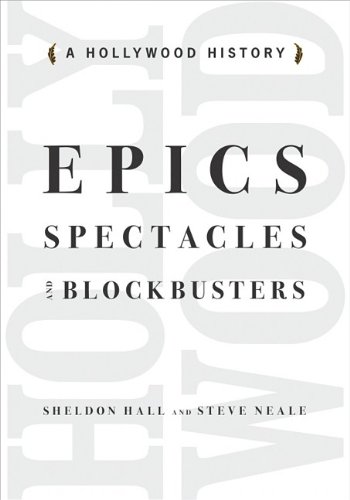

Most ebook files are in PDF format, so you can easily read them using various software such as Foxit Reader or directly on the Google Chrome browser.
Some ebook files are released by publishers in other formats such as .awz, .mobi, .epub, .fb2, etc. You may need to install specific software to read these formats on mobile/PC, such as Calibre.
Please read the tutorial at this link. https://ebooknice.com/page/post?id=faq
We offer FREE conversion to the popular formats you request; however, this may take some time. Therefore, right after payment, please email us, and we will try to provide the service as quickly as possible.
For some exceptional file formats or broken links (if any), please refrain from opening any disputes. Instead, email us first, and we will try to assist within a maximum of 6 hours.
EbookNice Team

Status:
Available0.0
0 reviewsThe pantheon of big-budget, commercially successful films encompasses a range of genres, including biblical films, war films, romances, comic-book adaptations, animated features, and historical epics. In Epics, Spectacles, and Blockbusters: A Hollywood History authors Sheldon Hall and Steve Neale discuss the characteristics, history, and modes of distribution and exhibition that unite big-budget pictures, from their beginnings in the late nineteenth century to the present. Moving chronologically, the authors examine the roots of today's blockbuster in the "feature," "special," "superspecial," "roadshow," "epic," and "spectacle" of earlier eras, with special attention to the characteristics of each type of picture.
In the first section, Hall and Neale consider the beginnings of features, specials, and superspecials in American cinema, as the terms came to define not the length of a film but its marketable stars or larger budget. The second section investigates roadshowing as a means of distributing specials and the changes to the roadshow that resulted from the introduction of synchronized sound in the 1920s. In the third section, the authors examine the phenomenon of epics and spectacles that arose from films like Gone with the Wind, Samson and Deliliah, and Spartacus and continues to evolve today in films like Spider-Man and Pearl Harbor. In this section, Hall and Neale consider advances in visual and sound technology and the effects and costs they introduced to the industry.
Scholars of film and television studies as well as readers interested in the history of American moviemaking will enjoy Epics, Spectacles, and Blockbusters.